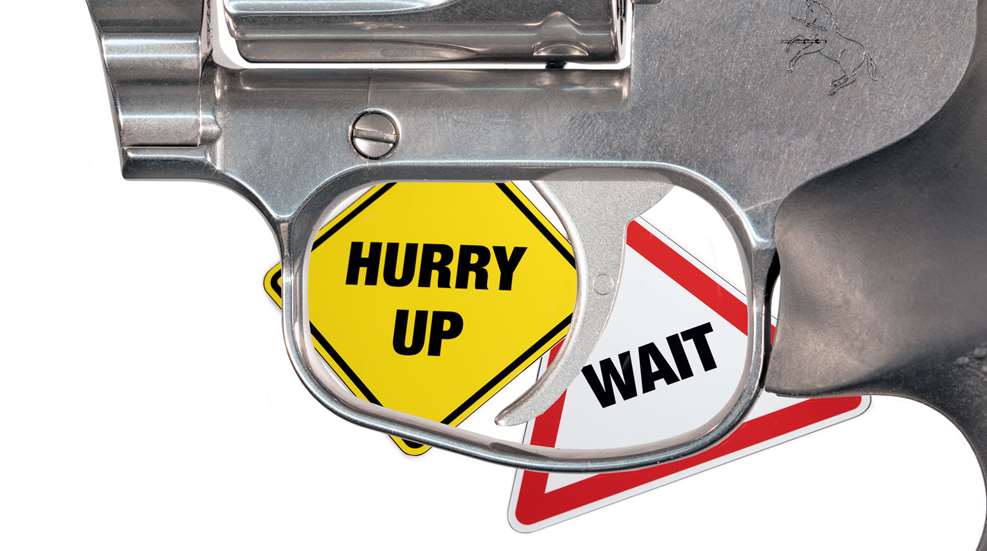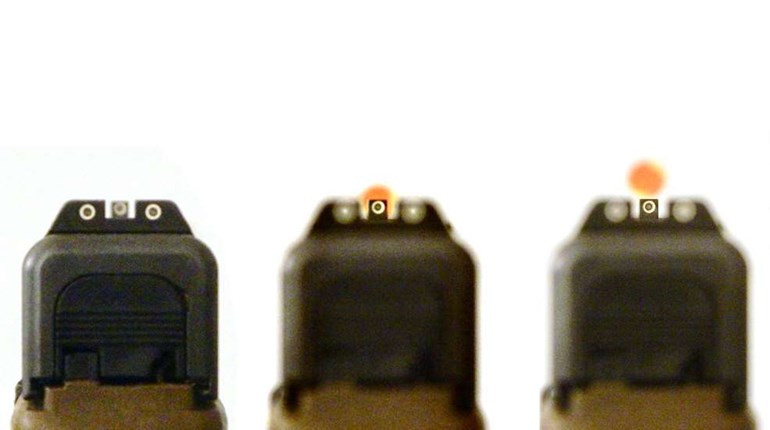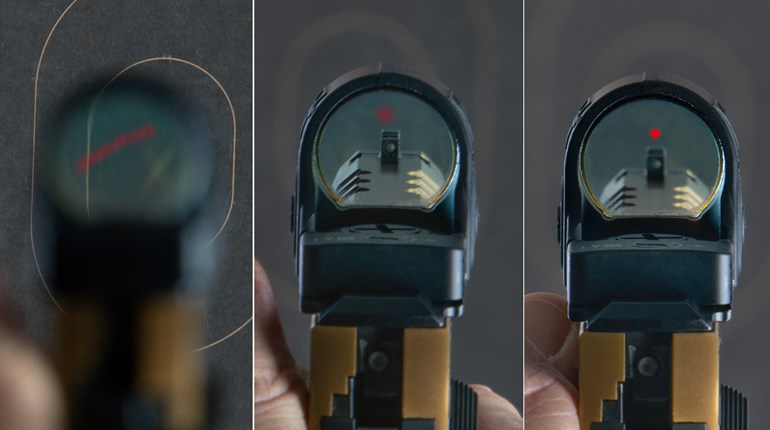
Every pistol-shooter who trains to develop the ubiquitous sub-second draw shares in a battle with the same two demons: hurry up and wait. The secret to building this coveted shooting-performance skill is knowing how to balance the two on demand. It is a balancing act attainable for those willing to put in the requisite amount of training.
Our drill this month trains you to identify and utilize your speed zones (hurry up) and control zones (wait) to find maximum efficiency in your draw stroke from either the open- or concealed-carry positions. The ultimate objective of this drill is for you to deliver a near- or sub-second round from the holster on target and on demand.
Here’s the Drill
Set up either a steel or paper target with a designated center mass at the 7-yard line (T1; remember, if using steel at this distance, frangible ammunition is required). Shooters seeking more of a challenge may increase target difficulty by either reducing target size, increasing distance or setting a greater penalty for a miss.
Waypoints
Step one to finding your efficiency is to identify specific waypoints (points of reference) along the trajectory of your draw stroke from the holster to full extension. One way to do this is to label each of these in order from holstered position to full-extension position.
The first waypoint—starting from the holster—is where both your hands come together. It is at this position that you may gain significant muzzle stability by welding your support hand to your master grip and coming to alignment via your natural point-of-aim using proprioception (body feel) as opposed to visual confirmation (which comes later). Let’s name this the “Index” waypoint.
Next is the “Apex” waypoint where you have gained further stability and alignment and are now entering into the visual confirmation and fire-control zone.
Lastly, is the top-of-draw-stroke (TODS) where you are fully extended with the muzzle pointed at the target.
Speed Zone
Now, with your waypoints in place, you can identify your speed zone. It can be described as that trajectory from the gun in your holster all the way through and including Index (your first waypoint). The space between your holster and your Index waypoint is a speed zone.
The speed zone is where you can move with tremendous alacrity (go as fast as you can safely execute). Starting from the holstered position, run through this speed zone at least 10 times, each repetition decreasing the amount of time it takes you to reach the index position with stability and accurate proprioceptive alignment.
Control Zone
Now that you’ve reached the Index position, your movement from Index through Apex is where you start to apply the air brakes or bleed off speed to glide into TODS with optimal muzzle and fire control.
The speed zone is where you go fast (hurry up), and the control zone is where you apply precise control based on visual and/or tactile confirmation so that when you are ready (wait), you may break the round at or before TODS. You can run this drill both live and in dry practice. Run it faster and faster, for at least 10 repetitions or until the wheels fall off.
The purpose of this drill is to discover by feel and observation which of the zones (speed or control) need to be further dialed in to make good hits in less and less time. This “speed-control, mental-compartmentalization” approach can help you find efficiency, which translates to overall speed.
Knowing where to hurry up (speed zone) and where to wait until you have what you need (control zone) is crucial if you want to deliver accurate round placement at exceptionally faster speeds.





































